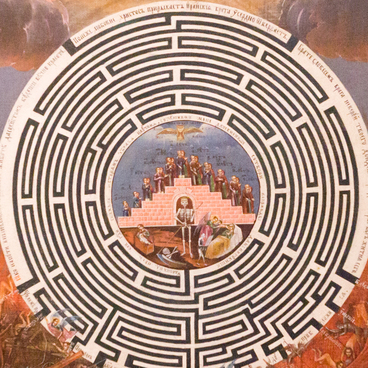The unknown artist painted the icon Venerable Alexis in the late 18th century. In the centre, he depicted Roman full in Christ Alexis, and around him – 12 border scenes with the episodes of his life from birth to death. In iconography, each border scene is an independent image, most often – of rectangular shape, which depicts a separate episode of the central theme. Traditionally the border scenes are used in hagiographical icons depicting not only the image of the Saint, but also the events of his mortal life.
In this icon, the author combined traditional features of iconography in a slightly simplified folk style and Baroque style popular in that time. For example, the master painted pompous frames around the border scenes, cartouches in Baroque style. He even selected the colors in accordance with this style. The artist used active colors: yellow and blue, red and dark blue framed by brown margins. When painting architecture and people, the artist was based on the traditions of Western Europe engravings, which the Russian icon painters were studying in that time. Thus, the artist painted the actual proportions of a human body and modeled tridimensional figures thanks to skillful drawing of light and shade.
In this icon, the author combined traditional features of iconography in a slightly simplified folk style and Baroque style popular in that time. For example, the master painted pompous frames around the border scenes, cartouches in Baroque style. He even selected the colors in accordance with this style. The artist used active colors: yellow and blue, red and dark blue framed by brown margins. When painting architecture and people, the artist was based on the traditions of Western Europe engravings, which the Russian icon painters were studying in that time. Thus, the artist painted the actual proportions of a human body and modeled tridimensional figures thanks to skillful drawing of light and shade.


